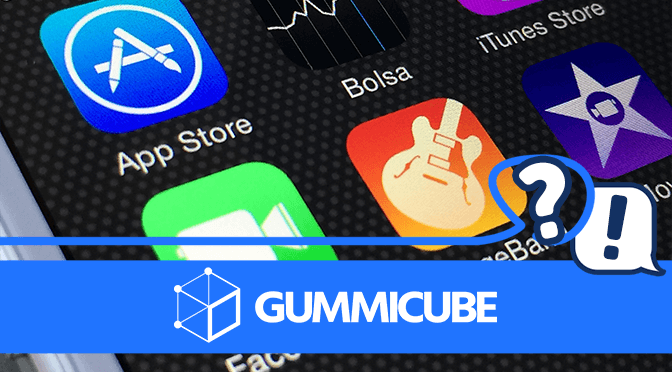
Posted on July 20th, 2019
While App Store Optimization (ASO) and Search Engine Optimization (SEO) are not the same, they both require an understanding of how their respective search engines work. In the case of ASO, it utilizes the App Store search engine – in fact, 70% of app discovery happens thanks to the store’s search. With that in mind, it’s time to take a look at the App Store search engine and understand how to fully utilize it for your ASO.

Posted on July 19th, 2019
Over the past few days, social media quickly filled with posts from an app called FaceApp, which uses AI to edit photos of users faces. Just as quickly, users began raising privacy concerns with the app, such as cloud photo storage and unauthorized access to the user’s photo library. Whether or not these fears are founded, it provides a solid example of why apps should be upfront about privacy and security.

Posted on July 16th, 2019
We’re well into Summer, which means people around the country are heading off on vacations, and many of them are using apps to plan and book their trips. Travel and vacation apps should optimize to take advantage of this increased demand and bring in new users. For this week’s App Store Spotlight, we’re taking a look at the Trip.com app to see if its App Store Optimization is good enough to provide it a one-way ticket to the top of search results.

Posted on July 13th, 2019
The app subtitle is an opportunity for developers to include a preview of what their app offers through keywords and brief but engaging copy. Here's how you can use yours to enhance your ASO

Posted on July 12th, 2019
Reviews are valuable to an app for many reasons. They can signal to other users if an app is well-liked, provide developers with feedback on issues or ways they can improve, and are helpful for App Store Optimization. It’s no wonder that developers would want their apps to receive positive reviews, but it’s important to gain the reviews properly. New reports of fake reviews have surfaced, so developers need to understand why they should avoid underhanded methods of inflating their rankings and how to naturally improve their reputation.

Posted on July 11th, 2019
Choosing the right keywords can make a big difference in your app’s success. They’ll help determine what users will see your app and how many searches it will appear in, so choosing what keywords you’ll want is a major part of App Store Optimization. The App Store keyword search volume is one of the most important things to consider when choosing your keywords, so here are some things you’ll want to know when deciding.

Posted on July 9th, 2019
The Sims is a long-lasting and popular game, wherein users can create characters and control their lives. While originally a desktop game, The Sims is available on mobile devices as The Sims Mobile, where it’s maintained a strong presence in terms of keyword rankings and downloads. However, there is always room to improve, so where can The Sims Mobile grow? For this week’s App Store Spotlight, we take a look and see how The Sims Mobile’s App Store Optimization checks out.

Posted on July 2nd, 2019
With 4th of July nearly upon us, developers with relevant apps can utilize the holiday to give their apps a push. This can be for 4th of July stickers, barbecue recipes, shopping apps with sales, or apps made for fireworks celebrations. Fireworks Arcade is one such app, so for this week’s App Store Spotlight, we’re taking a look and seeing if it’s optimized and can use the holiday to its fullest.

Posted on June 29th, 2019
For an app to thrive on the App Store, it needs visibility in searches. The days where an app’s category ranking determines its success are long gone – today, keyword rankings are what matter the most, as the majority of app discovery takes place in search. As a major factor of App Store Optimization is improving your keyword rankings, one should understand how they work on the App Store and why they’re important.

Posted on June 28th, 2019
Google is set to roll out new updates for Google Ads that will impact how apps are discovered in web searches. What makes this interesting is that it’s designed for iOS apps, rather than Google Play apps. The company will be able to access Google Search inventory on the Safari browser for iOS, a move intended to improve traffic and impressions from searches on iOS devices. This could change how iOS developers implement their paid campaign strategies.

Posted on June 27th, 2019
When optimizing your app for the App Store, it’s important to choose your keywords wisely. Your keywords will determine what searches your app can show up in, and searches make up 70% of app discoverability, so the importance of keywords for App Store Optimization cannot be overstated. With that in mind, here are some App Store keyword rules and best practices you’ll want to know when optimizing your app.

Posted on June 25th, 2019
A few years after Niantic’s smash hit app, Pokémon Go, the company is attempting to recreate the same magic with Harry Potter: Wizards Unite. As with Pokémon Go, the augmented reality app is off to a strong start, quickly gaining high ranks for several keywords, but its early momentum can only take it so far – Wizards Unite will need App Store Optimization to keep up with the high expectations users have placed upon it based on Niantic’s past success. So, without further ado, let’s take a look at Wizards Unite for this week’s App Store Spotlight and see if it can cast a spell on its optimization.













